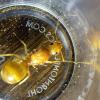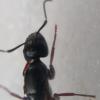Cool! That's awesome that you're so close. I am not sure which outlet I will pitch this piece to yet (still just gathering information) but I'll definitely let you know. I never was interested in ants until I had a MAJOR infestation a few months ago. Then I tried to kill a bunch of them unsuccessfully... that's when I started researching what kind they are. Turns out their Argentine ants (yep, I realize they're all over California!). So now I'm watching them and trying to find a queen.
What kinds of ants do you keep? And would you be willing to chat with me so I can learn more? I'd love to hear how the hobby has changed over time.
Best,
Lauren
Hi Lauren,
Yeah the Argentine ants are kind of annoying. They have many queens per nest, and you're unlikely to see them flying. They have so many queens per nest the ants do a mass slaughter of underperforming queens in the spring. Here is a great KQED article on Argentine ants and one of the few ants that can hold them off: the winter ant (Prenolepis imparis). https://www.kqed.org...ne-ant-invaders
In fact, Stanford's Jasper Ridge scientists do ant research and occasionally host Zoom meetings, etc. https://jrbp.stanfor...jrbp-ant-survey
Antkeeping usually does NOT involve Argentines, as they are small, nomadic, escape easily, obnoxious, and may bring back 999999 of their friends to invade your home. But there are still a surprising number of non-Argentines around, though in my neighborhood it's still mostly Argentines  California is home to some of the most interesting and sought-after ants in the US. I have some PDFs from the Jasper Ridge group if you're interested in local ants, though it doesn't cover the SoCal species that are highly popular (e.g. Camponotus fragilis, honeypot ants, etc.).
California is home to some of the most interesting and sought-after ants in the US. I have some PDFs from the Jasper Ridge group if you're interested in local ants, though it doesn't cover the SoCal species that are highly popular (e.g. Camponotus fragilis, honeypot ants, etc.).
While I started decades ago, I only re-started last year, so I'm not aware of the last decade's worth of changes and trends. I will tell you that when I was first keeping ants, I had a toy formicarium made for Japanese kids (wish I could find pictures but I can't), a jar-in-jar dirt formicarium, and an Uncle Milton ant farm. I started at least one or two colonies in the Uncle Milton ant farm by catching queens and putting in regular dirt, but the lack of internet made keeping them alive difficult.
Past & Present
Veromessor pergandei, andrei, stoddardi; Novomessor cockerelli
Camponotus fragilis, Camponotus sansabeanus (inactive), vicinus, laevigatus/quercicola, CA02
Pogonomyrmex subnitidus, P. californicus (inactive)
Liometopum occidentale (inactive); Prenolepis imparis; Myrmecocystus mexicanus (inactive); Tetramorium sp. (inactive); Lasius sp.
Termites: Zootermopsis angusticollis, and a box of drywood termites that can't be seen
Isopods: (most no longer keeping) A. gestroi, granulatum, kluugi, maculatum, vulgare; C. murina; P. hoffmannseggi, P. haasi, P. ornatus; V. parvus, P. pruinosus, T. tomentosa
Spoods: (no longer keeping) Phidippus sp., other
![]() Hi from Oakland, California! I'm a journalist exploring the world of ant keeping and curious what draws people to the hobby? Feel free to share your thoughts or message me directly! I'd love to hear what made you want to start an ant colony.
Hi from Oakland, California! I'm a journalist exploring the world of ant keeping and curious what draws people to the hobby? Feel free to share your thoughts or message me directly! I'd love to hear what made you want to start an ant colony.























